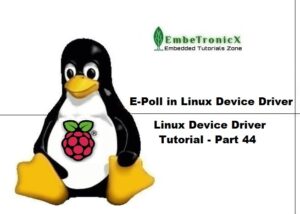

- #Ni linux device drivers install
- #Ni linux device drivers driver
- #Ni linux device drivers full
- #Ni linux device drivers code
#Ni linux device drivers full
The Full Development System version of LabVIEW does not come with the modules needed to program the cRIO. The Linux Real-Time OS running in the real-time controller supports a filesystem and hence data logging is also available at the controller level.
#Ni linux device drivers code
Programs created in LabVIEW are compiled into machine code for NI Linux Real-Time and hardware description language (HDL) for the Xilinx FPGA toolchain automatically during deployment of the code to the target. The controller comes with a Linux based RTOS, NI Linux Real-Time, created as part of the Linux Foundation's Real-Time Linux Collaborative Project. LabVIEW must be used to program the embedded FPGA. Newer, high-performance CompactRIO controllers also have built-in VGA graphics which can be connected to a monitor for observing operation.ĬompactRIO controllers can be programmed with LabVIEW, National Instruments' graphical programming language C C++ or Java. Third-party modules are manufactured for additional features, such as LCD or VGA displays. The chassis is available in 4 slot and 8 slot varieties. The Ethernet chassis includes an Ethernet port ( 8P8C), which can connect the CompactRIO controller to a PC. The FPGA can be programmed separately and is connected to the real-time controller using an internal PCI bus. The module is powered by a Xilinx Virtex high-performance FPGA. Such data processing may be performed on data streaming in from connected I/O Modules. The FPGA Module may be used to implement high-performance data processing on reconfigurable fabric. I/O modules are hot swappable (can be connected/disconnected while the unit is powered up). Controllers are only compatible with National Instruments C Series I/O Modules. Third-party modules are also available, and are generally compatible with NI-produced chassis controllers.ĬompactRIO real-time controllers include a microprocessor for implementing control algorithms, and support a wide range of clock frequencies. There seems to be a convention for the name to start with “L”.The CompactRIO system is a combination of a real-time controller chassis, reconfigurable IO Modules (RIO), an FPGA module and an Ethernet expansion chassis. You’ll need to use this name as the first parameter to the GpibBoardDriverConfig command in the st.cmd of your softIOC later on.

#Ni linux device drivers driver
find out what low-level driver from linux-gpib does support you board, e.g. Assuming you have a single GPIB interface board in your machine, you’ll need to Once you have linux-gpib installed, it’s time to configure your interface board. Refer to the linux-gpib documentation for this. You can always resort to compiling linux-gpib youself. On other distributions, check for the availability of linux-gpib packages.
#Ni linux device drivers install
You can install the user space part of linux-gpib. Similarly, by issuing apt-get install libgpib0 libgpib0-dev libgpib-bin To build and install the kernel modules of the linux-gpib driver for your kernel. Module-assistant auto-install gpib-modules-source On Debian, you can just do apt-get install gpib-modules-source module-assistant You need linux-gpib, EPICS base, asyn, and StreamDevice. The instructions are based on Debian Linux, but should be easily adaptable to other flavors of Linux. The following instructions explain the setup of an EPICS softIOC to talk to a GPIB device on Linux. STEP 2: Use asyn and StreamDevice support.


 0 kommentar(er)
0 kommentar(er)
